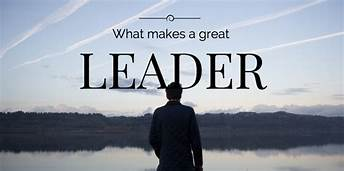
Of all the many factors that impact an organization’s performance, studies consistently find an organization’s leadership has the most impact. So, for good reason, leadership development receives a lot of attention. Many books, seminars, and other resources target leadership development. Yet, the quality of leadership shows little improvement from year to year with many studies finding year-over-year declines in the quality of leadership in both the private and public sector.
There are many challenges to becoming a great leader. Leadership is multi-dimensional and difficult. Leaders can’t just command and control people. Followers don’t simply do what they are told. Nor do they want to be told what to do. People have their own ways of thinking and doing. People can be influenced at best. Neither is there merely one way to be a great leader, or a bad one. There isn’t just one thing to do, or three, or even twenty. Regardless of the number, learning to be a great leader requires changes in thought and behavior which are rarely easy.
One of the biggest challenges people face, particularly new managers, is the transition from being an individual contributor to a leader. Being a leader is a very different role. The responsibilities are much different than a doer or even a manager. Leaders don’t do the work of the organization. They lead the work. Yet they don’t tell people what to do. They don’t rely on their authority, or domain skills, but rather their ability to influence. Great leaders pull instead of push.
The shift in responsibility to a leader also requires a shift in mindset. Great leaders lose the “me” mentality in favor of the “we” mentality. They take on the needs of the team in addition to their own. They concern themselves with the success of each team member which in turn leads to the success of the team.
Many managers are afraid to lead. They are afraid to let go, empower, and let others do the work because they fear they will have little left to do. They fear not contributing value. Nothing could be further from reality. There is plenty left for a leader to do. There is work to be done that adds even more value than individual contributor work.
The job description for great leaders who let go, empower their teams, and pull instead of push has many dimensions. The responsibilities are significant. Listed below are ten of them that are consistently performed by great leaders. Note that “Do the work for the team” and “Tell people what to do” aren’t in the list of responsibilities:
- Attract and hire top talent – Bring people into the organization who have the right attributes and are the appropriate fit for the work to be done, the desired culture, and the goals of the organization.
- Motivate and inspire – Maintain people’s enthusiasm, engagement, and passion. Understand what drives people and align their drivers with the organization’s objectives.
- Encourage and exhort – Recognize, praise, and reward desirable behaviors. Make people feel good about the contributions they make. Challenge people to do their best.
- Guide and inform – Communicate the organization’s vision, goals, strategies, plans, and activities. Keep people updated on the organization’s accomplishments and needs. Set the example to follow.
- Coach and develop – Help people learn and grow. Increase their self-awareness and identify areas of strength and development. Help them advance in their career. Develop future successors.
- Provide resources and enable – Provide support, tools, equipment, and facilities. Help people be productive and leverage their opportunities. Help them assess, understand, and overcome obstacles.
- Manage and maintain accountability – Set clear expectations, track progress, conduct reviews, provide course correction, and implement consequences – both reinforcing and correcting.
- Assimilate and foster teamwork – Bring internal and external resources together. Build a team identity and sense of community. Maintain harmony. Leverage the synergies of diverse people.
- Improve the organization – Challenge the status quo. Create new opportunities. Identify problems to solve. Develop strategies. Launch initiatives that enhance and expand the organization.
- Build external relationships – Join boards, volunteer, present at conferences, and be involved with outside organizations. Promote the organization’s brand and capabilities, develop new business opportunities, and secure relationships that help achieve the organization’s goals.
Copyright © 2018 Alpine Link Corporation, www.alpinelink.com. All rights reserved.
